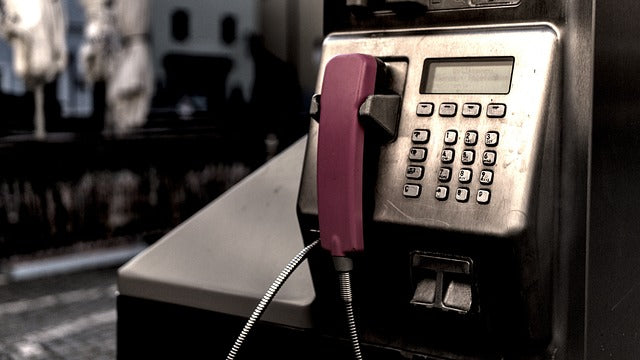L'histoire et l'évolution des indicatifs régionaux aux États-Unis

Les indicatifs régionaux sont une caractéristique déterminante du système de télécommunications américain, servant de repères géographiques et d'outils pratiques pour le routage des appels. Leur développement reflète l'histoire de la communication américaine, façonnée par la croissance de la population, les avancées technologiques et les demandes régionales. Des États avec plusieurs indicatifs régionaux attribués à des villes spécifiques à ceux utilisant un seul indicatif régional à l'échelle de l'État, la diversité dans l'attribution des indicatifs régionaux raconte une histoire d'adaptation et d'innovation.
Cet article explore l'histoire, les raisons derrière les variations et l'évolution continue des indicatifs régionaux aux États-Unis.
1. L'origine des indicatifs régionaux
1.1 L'introduction du Plan de numérotation nord-américain (NANP)
En 1947, AT&T a introduit le Plan de numérotation nord-américain (NANP) pour simplifier les appels longue distance. Ce système a attribué des indicatifs régionaux à trois chiffres à des régions spécifiques, permettant un appel automatisé sans assistance d'un opérateur.
-
Pourquoi le NANP était nécessaire :
-
La demande croissante de services téléphoniques nécessitait un système standardisé.
-
Le numérotage automatisé a éliminé le besoin d'opérateurs humains pour connecter les appels manuellement.
-
-
Attribution initiale :
-
La densité de population et le volume d'appels prévu ont déterminé les attributions des indicatifs régionaux.
-
Des codes emblématiques comme le 212 (New York City) ont été choisis pour leur facilité de composition sur les téléphones à cadran.
-
1.2 Caractéristiques précoces des indicatifs régionaux
-
Les indicatifs régionaux suivaient un format spécifique : le premier chiffre variait de 2 à 9, et le deuxième chiffre était soit 0 soit 1.
-
Ce format distinguait les indicatifs régionaux des numéros locaux, évitant ainsi toute confusion dans le système de numérotation.
2. États avec plusieurs indicatifs régionaux
2.1 Facteurs de la multiplication des indicatifs régionaux
-
Densité de population :
-
Des États comme la Californie, le Texas et New York possèdent de nombreuses villes densément peuplées nécessitant des indicatifs régionaux distincts.
-
Exemple : La Californie, avec plus de 30 indicatifs régionaux, reflète sa population importante et en croissance.
-
-
Activité économique :
-
Une forte activité commerciale dans les centres urbains augmente la demande de numéros de téléphone.
-
Exemple : L'indicatif régional original 212 de New York a été étendu pour inclure 718, 917, et d'autres.
-
-
Expansion Technologique :
-
L'essor des téléphones mobiles, des pagers et des appareils connectés à Internet a créé une demande sans précédent pour de nouveaux numéros.
-
2.2 Exemples Régionaux
-
Californie :
-
Le code régional 213 de Los Angeles a finalement été divisé en plusieurs codes (par exemple, 323, 818) pour répondre à la demande croissante.
-
-
Texas :
-
Dallas (214) et Houston (713) ont été étendus pour inclure des codes supplémentaires comme 469 et 281 en raison de la croissance rapide des zones urbaines et suburbaines.
-
3. États avec des indicatifs régionaux uniques
3.1 Raisons d'un indicatif régional unique
-
Densité de population faible :
-
Des États comme le Wyoming (307) et le Montana (406) maintiennent un indicatif régional unique en raison de leurs petites populations.
-
-
Demande limitée :
-
Moins d'entreprises et d'utilisateurs résidentiels réduisent le besoin d'indicatifs supplémentaires.
-
-
Simplicité géographique :
-
Les États avec un indicatif régional unique ont souvent de vastes paysages ruraux avec moins de zones urbaines centralisées.
-
3.2 Exemples Notables
-
Wyoming (307):
-
Couvre l'ensemble de l'État, reflétant sa population clairsemée.
-
-
Hawaï (808):
-
Bien qu'étant une destination touristique majeure, la géographie unique d'Hawaï et l'utilisation limitée des lignes fixes ont maintenu le 808 suffisant.
-
4. Évolution des Indicatifs Régionaux
4.1 Le Passage de l'Analogique au Numérique
La transition des téléphones à cadran vers les systèmes numériques à la fin du 20ème siècle a permis plus de flexibilité dans l'attribution des numéros.
-
Impact :
-
Les indicatifs régionaux ne doivent plus suivre des modèles rigides.
-
Les échanges numériques ont facilité l'attribution de nouveaux codes sans perturber les systèmes existants.
-
4.2 L'essor des codes de superposition
-
Quels sont les codes de superposition ?
-
Au lieu de diviser les régions, de nouveaux indicatifs régionaux sont ajoutés à la même zone géographique.
-
Exemple : L'indicatif 212 de New York City chevauche désormais 646 et 332.
-
-
Avantages :
-
Permet aux numéros existants de rester inchangés.
-
Simplifie le processus pour les entreprises et les résidents.
-
4.3 Impact des appareils mobiles
L'explosion des téléphones mobiles dans les années 1990 et 2000 a considérablement augmenté la demande de numéros de téléphone.
-
Défis :
-
Les indicatifs régionaux existants ont rapidement été épuisés.
-
Les réglementations fédérales exigeaient que les fournisseurs de télécommunications garantissent une distribution équitable des nouveaux numéros.
-
5. Codes régionaux et identité culturelle
5.1 Codes régionaux en tant que symboles régionaux
-
De nombreux codes régionaux sont devenus des marqueurs culturels, symbolisant la fierté et l'identité des résidents.
-
Exemples :
-
212 : Synonyme de la sophistication et de l'histoire de New York.
-
310 : Représente l'affluence et le style de vie de l'ouest de Los Angeles.
-
5.2 Influence de la culture pop
-
Les indicatifs régionaux apparaissent fréquemment dans la musique, les films et la littérature, renforçant leur signification.
-
Exemple : La chanson de Ludacris "Area Codes" célèbre l'ubiquité des numéros de téléphone dans les relations modernes.
-
6. Défis et tendances futures
6.1 Épuisement des ressources numérotées
-
La forte demande continue de mettre la pression sur les systèmes de numérotation, en particulier dans les centres urbains.
-
Exemple : L'introduction de nouveaux codes comme le 332 pour New York met en lumière ce problème.
6.2 Alternatives Technologiques
-
La VoIP (Voix sur Protocole Internet) et les numéros virtuels réduisent la dépendance aux indicatifs géographiques.
-
Utilisation accrue des indicatifs non géographiques (par exemple, les numéros gratuits) pour les entreprises.
6.3 Le Rôle de l'IA et de l'Automatisation
-
Les systèmes pilotés par l'IA peuvent optimiser l'allocation des numéros et prédire les tendances de demande futures.
-
Une analyse de données améliorée peut permettre une utilisation plus efficace des indicatifs existants.
7.Conclusion
L'histoire et l'évolution des indicatifs régionaux aux États-Unis illustrent l'interaction entre la technologie, la croissance démographique et l'identité culturelle. Des États densément peuplés avec de nombreux indicatifs aux régions rurales avec un seul code, chacun reflète des facteurs historiques et sociaux uniques.
Alors que nous entrons dans une ère numérique, les indicatifs régionaux peuvent devenir moins pertinents pour la communication pratique, mais ils resteront probablement de puissants symboles de fierté régionale. Inspirées par cette histoire, des solutions comme le bot téléphonique multilingue de DELIGHT continuent d'innover, reliant l'identité locale et les besoins de communication mondiaux avec efficacité et adaptabilité.


